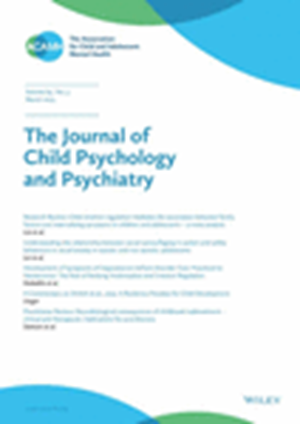Childhood trauma, adolescent risk behaviours and cardiovascular health indices in the 2004 Pelotas Birth Cohort.
IF 7
1区 医学
Q1 PSYCHIATRY
引用次数: 0
Abstract
BACKGROUND Childhood trauma has been associated with increased risk of substance use and poor sleep, with these factors linked to subsequent poor cardiovascular health. However, there has been little longitudinal research exploring these associations in adolescence, especially in low- and middle-income countries (LMICs). To address this, we investigated longitudinal pathways from trauma to risk behaviours and cardiovascular health indices among adolescents in the 2004 Pelotas Birth Cohort, Brazil. METHODS Lifetime cumulative trauma was assessed via caregiver reports up to age 11, and combined adolescent/caregiver reports at ages 15 and 18. At age 18, current problematic alcohol use, smoking, illicit drug use and sleep duration were measured via self-report and resting heart rate (HR) and blood pressure (BP) were assessed. We tested for trauma risk behaviour-HR/BP associations using multivariable regression, population attributable fractions and counterfactual mediation. RESULTS Of 4,229 adolescents (51.9% boys), 81.9% were trauma-exposed by age 18. Cumulative trauma up to ages 15 and 18 increased the odds of age 18 alcohol, smoking and drug use (adjusted ORs: 1.25-1.44). Sleep duration was unrelated to childhood trauma. Population attributable fractions indicated that childhood trauma explained ≥28% of age 18 substance use. Unexpectedly, greater trauma exposure was associated with lower resting HR and BP. Substance use partially mediated the effect of trauma on cardiovascular health indices. CONCLUSIONS Trauma is associated with substance use in LMIC adolescents. Prevention and intervention strategies targeting trauma are critical given this significant burden. Our finding that trauma predicts lower HR/BP warrants further exploration given well-established associations between trauma and poorer cardiovascular health in adulthood.2004年佩洛塔斯出生队列中的童年创伤、青少年危险行为和心血管健康指数。
童年创伤与药物使用风险增加和睡眠不足有关,这些因素与随后的心血管健康状况不佳有关。然而,很少有纵向研究探索这些关联在青春期,特别是在低收入和中等收入国家(LMICs)。为了解决这个问题,我们调查了2004年巴西佩洛塔斯出生队列中青少年从创伤到危险行为和心血管健康指数的纵向途径。方法通过11岁前的照顾者报告,以及15岁和18岁时青少年/照顾者的综合报告来评估终身累积创伤。在18岁时,通过自我报告测量当前有问题的酒精使用、吸烟、非法药物使用和睡眠时间,并评估静息心率(HR)和血压(BP)。我们使用多变量回归、人口归因分数和反事实调解来测试创伤风险行为与hr /BP的关联。结果4229名青少年(51.9%为男孩)中,81.9%的人在18岁前暴露于创伤。15岁和18岁前的累积创伤增加了18岁时酗酒、吸烟和吸毒的几率(调整后的or: 1.25-1.44)。睡眠时间与童年创伤无关。人群归因分数表明,童年创伤解释了≥28%的18岁药物使用。出乎意料的是,更大的创伤暴露与更低的静息心率和血压相关。物质使用部分介导创伤对心血管健康指标的影响。结论创伤与低mic青少年药物使用相关。鉴于这一重大负担,针对创伤的预防和干预策略至关重要。鉴于创伤与成年期较差的心血管健康之间存在明确的关联,我们的发现可以预测较低的HR/BP,这值得进一步探索。
本文章由计算机程序翻译,如有差异,请以英文原文为准。
求助全文
约1分钟内获得全文
求助全文
来源期刊
CiteScore
13.80
自引率
5.30%
发文量
169
审稿时长
1 months
期刊介绍:
The Journal of Child Psychology and Psychiatry (JCPP) is a highly regarded international publication that focuses on the fields of child and adolescent psychology and psychiatry. It is recognized for publishing top-tier, clinically relevant research across various disciplines related to these areas. JCPP has a broad global readership and covers a diverse range of topics, including:
Epidemiology: Studies on the prevalence and distribution of mental health issues in children and adolescents.
Diagnosis: Research on the identification and classification of childhood disorders.
Treatments: Psychotherapeutic and psychopharmacological interventions for child and adolescent mental health.
Behavior and Cognition: Studies on the behavioral and cognitive aspects of childhood disorders.
Neuroscience and Neurobiology: Research on the neural and biological underpinnings of child mental health.
Genetics: Genetic factors contributing to the development of childhood disorders.
JCPP serves as a platform for integrating empirical research, clinical studies, and high-quality reviews from diverse perspectives, theoretical viewpoints, and disciplines. This interdisciplinary approach is a key feature of the journal, as it fosters a comprehensive understanding of child and adolescent mental health.
The Journal of Child Psychology and Psychiatry is published 12 times a year and is affiliated with the Association for Child and Adolescent Mental Health (ACAMH), which supports the journal's mission to advance knowledge and practice in the field of child and adolescent mental health.

 求助内容:
求助内容: 应助结果提醒方式:
应助结果提醒方式:


